Seeing the interesting bird life of the Caribbean Islands was something that I very much looked forward to as the Tour got underway. Islands are well known as biodiversity hotspots, and tropical islands even more so. I was well aware of many beautiful and unique birds that live on the five smaller islands that made up this section of the Tour route before I reached the region, and I hoped to see as many of them as possible. I should also confess that I frequently think of birding on small islands, to use an unfortunate simile, as a fish-in-a-barrel activity, but in reality things are never that easy, and I missed a few high-quality species I had wanted to see, and failed to adequately photograph several others.
Guadeloupe, my first stop in the Lesser Antilles, has only one endemic bird, but it is one that that was high on my list of targets. However, thanks to the airline/bike mishap, I had only a few hours to make an attempt for it, and I was worried that I might not succeed. I rode up to the National Park in the hills of Basse-Terre Island and stopped at a picnic area where my target bird had been frequently seen. The forest there was quite attractive, but the birds, in general, did not seem to be very cooperative. Nevertheless, after a while I had accumulated some fairly unsatisfactory looks at Lesser Antillean Bullfinch, Plumbeous Warbler, Brown Trembler, Green-Throated Carib, and Lesser Antillean Swift. After a while, the picnic area began to get crowded with people using it for things like picnics, and I had the feeling that an epic dip was underway. That feeling was reinforced by the fact that seeing the bird in question was one of the main reasons I added Guadeloupe to the route in the first place. At that point I began to walk back along the road leading towards the main highway in order to escape the noise. Eventually, I saw a dark bird fly low across the road and land in a bush near the ground. Expecting it to be a thrush, I wasn’t very enthusiastic about investigating it, but I did anyway, just for good measure. That was a wise choice, because I soon realized it was the bird I was seeking, Guadeloupe Woodpecker! Many of the images I have seen of that species show it with a burgundy breast, but the five birds that were in that area seemed all black to me, which apparently is sometimes the case. That didn’t matter to me, since this was the fourth of four possible Melanerpes species I have seen on the Tour, which is a satisfying situation, since that genus may be my favorite.
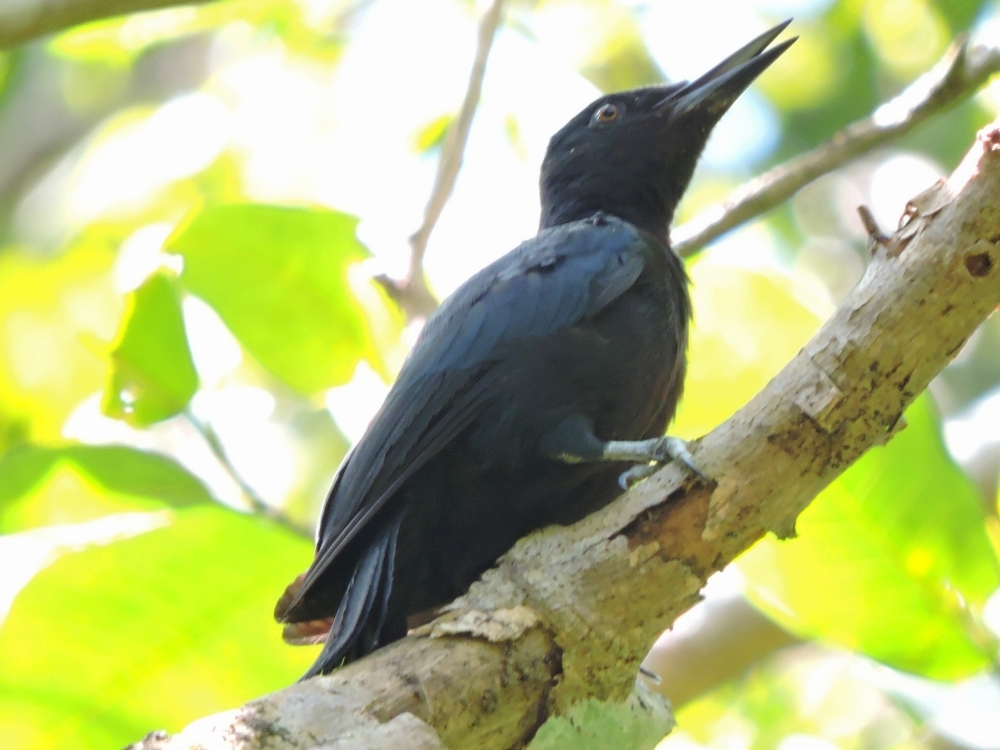
The possibility of seeing some nice birds, once again, had played a major part in choosing the next islands of the route, since four beautiful, and rare, parrots live on the next three islands, and I definitely wanted to see them. Dominica came next, and two of those parrots are found there. Both are best seen at the Syndicate Nature Trail and, as I have previously mentioned, getting there was a hot, tiring experience. At one point along the climb, I stopped in a rare shady spot to rest for a while, and let my eyes close to do so more effectively. A while later, I heard a distinctly parrot-like sound, and looked up just in time to see two mostly dark-colored examples of that family fly by, heading downhill. That was a little odd, since I was slightly lower in elevation compared to where they are normally seen, but they were certainly Imperial Parrot. They disappeared into a tree further downhill, and I wasn’t sure exactly which one, so I was unable to find them again. That was too bad, since that ended up being my only sighting of that special bird.
The other Dominican parrot is a little more common, but they also proved elusive. There is an overlook on the trail that is a good place to spot them, and I waited there for a while before a pair of Red-Necked Parrot flew out of the trees across the ravine. That time I was able to get my binoculars on one for a few seconds, and could just make out their markings before they melded back into the trees. Later, walking back on the trail, another pair flushed out of a tree literally right above my head. They made no noise prior to that, so I was very surprised, and all I saw was two big green birds fly off. Poorly seeing those two birds was a big disappointment, but that is life, sometimes. In the same area I also saw Broad-Winged Hawk, Blue-Headed Hummingbird, and Scaly-Breasted Thrasher Later, at Morne Trois Pitons National Park, I added Pearly-Eyed Thrasher, closing out a notably unproductive stop on that otherwise nice island.
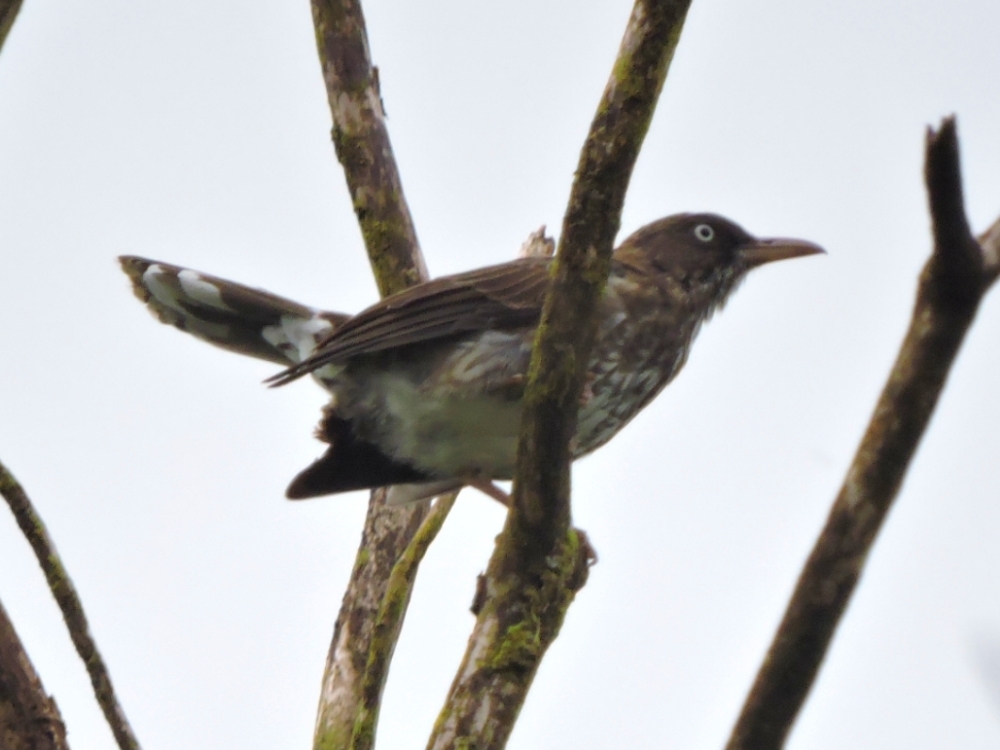
The next island, Saint Lucia, mirrored Dominica almost exactly in terms of the way my birding efforts played out. That island has five endemic birds, and from those, seeing its parrot was the most important of my goals. Its best location was also a nature trail up in the highlands, this time called the Des Cartiers trail. I tried to arrive as early as possible, but it was about 10:30 AM by the time I reached the small visitor gate. The parrots could be heard right by the entrance, and the caretaker told me that if I waited patiently at another overlook out on the trail, I would be able to see them. Well, I waited there for a long time and had just decided to give up, when, just like before, a few birds briefly flew out of the trees across the ravine. That time I tried to grab them with a quick unzoomed photo, with unsurprisingly bad results. My luck with the other endemic birds was not much better. I believe I saw Saint Lucia Black Finch, but that may be a questionable identification. Other new birds, slightly better seen, while on the island were Rufous-Throated Solitaire, Brown Booby, and this nice Purple-Throated Carib.
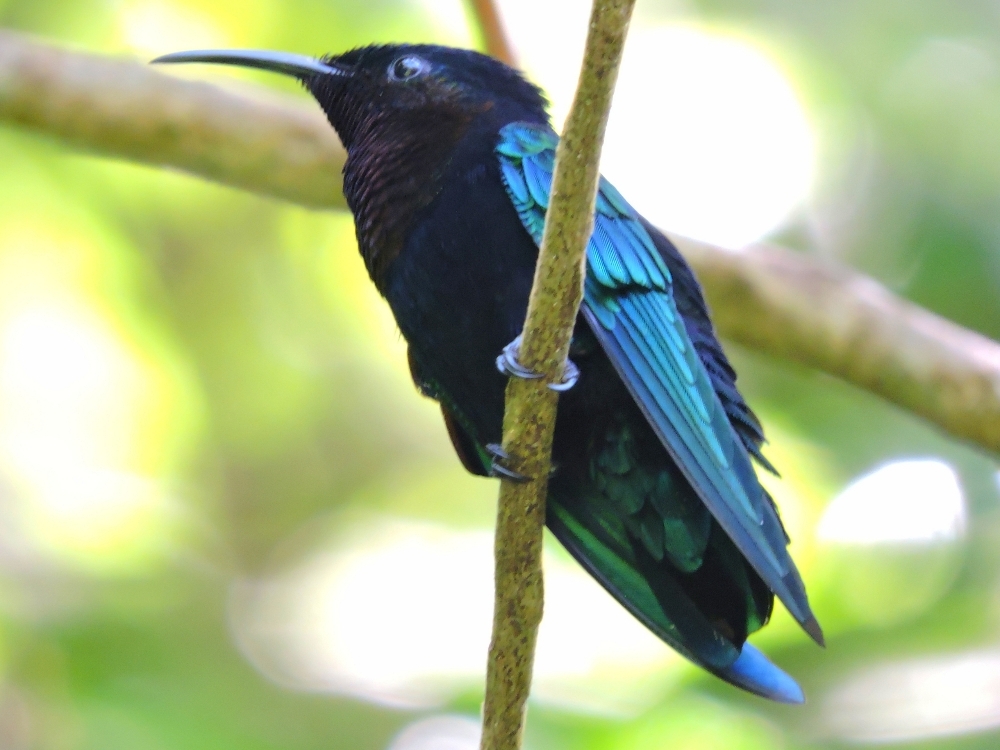
As have also mentioned already, Saint Vincent was, ironically, an island that I added at to the route at the last minute, specifically for a chance to see its endemic parrot. This time, the parrot reserve, at the Vermont Nature Trail, was closer to the capital and lower in elevation, so I was able to ride there and arrive somewhat earlier in the morning. Unfortunately, this time, despite waiting at the parrot overlook for a long time, the birds decided not to participate with the standard brief display. I think I heard a distant, though distinctive, call of the Saint Vincent Parrot, so I will begrudgingly count it, but that feels even more dissatisfying than the others. Other new birds seen that morning were Short-Tailed Swift, Lesser Antillean Tanager, Spectacled Thrush, and Antillean Crested Hummingbird. Usually, back-lit photos, like the one shown below, are undesirable, but sometimes the effect can turn out to be quite appealing.
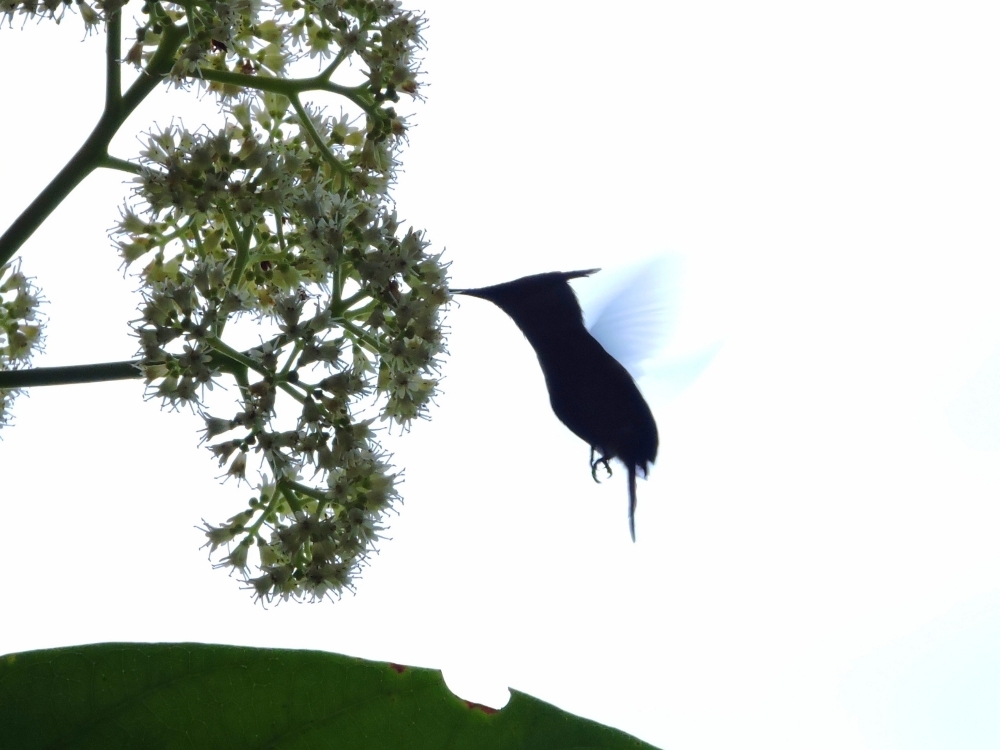
The last Caribbean island on the route was Trinidad, a location well-loved by birders who visit the neotropics. I had a long list of birds I wanted to see, and though I saw a reasonable number of them, the major dips of that visit were very disappointing. My first stop was the legendary Asa Wright Nature Center, where I had two and a half days to seek out some spectacular birds. Unfortunately, some of the stars failed to shine this time. The famous Oilbirds had recently vacated their cave, the Bearded Bellbird failed to even chime, and the trogons called but remained out of sight. Nevertheless, several other birds took their place, with the usual collection of hummingbirds leading the way. The better sightings included Scaled Pigeon…
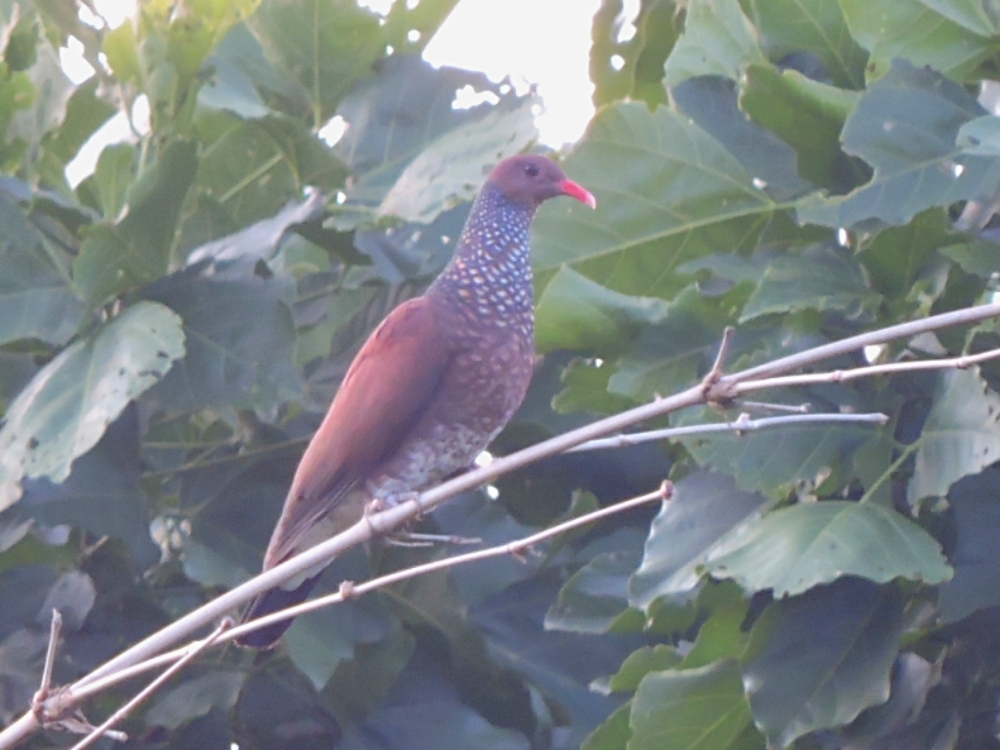
…Purple Honeycreeper…
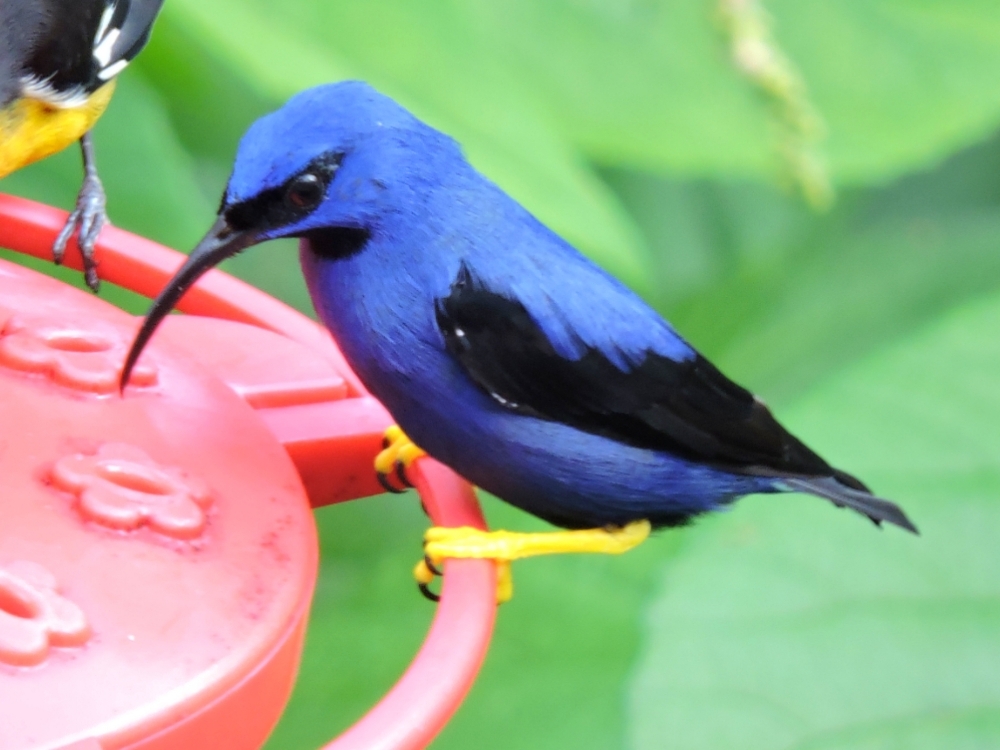
…Golden-Olive Woodpecker…
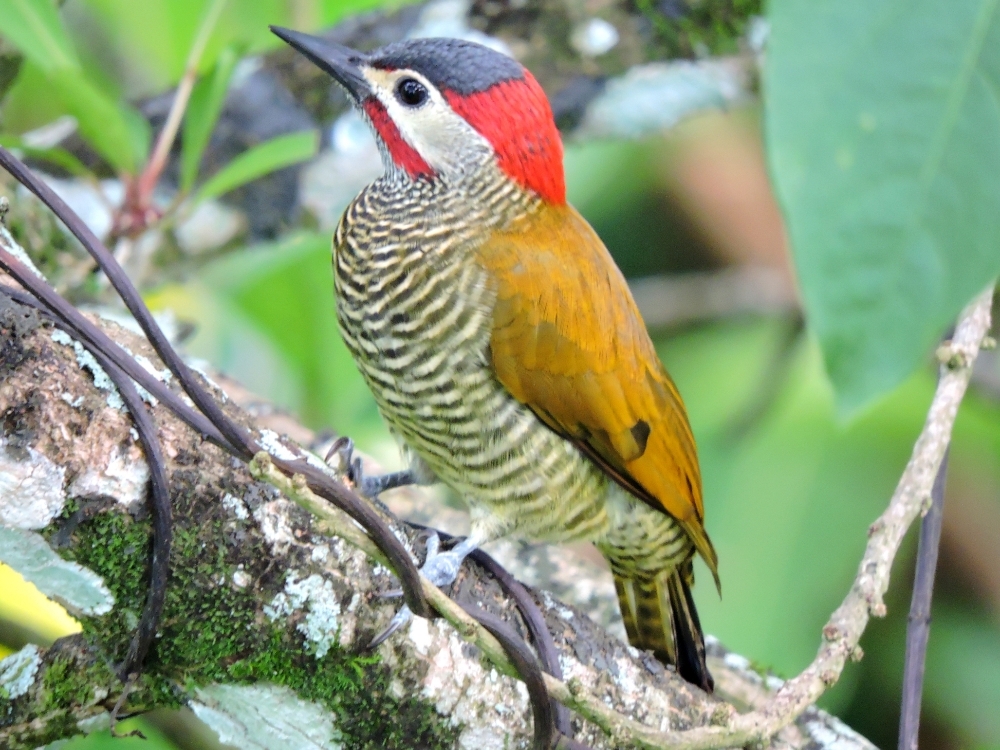
…and the recently-split Trinidad Motmot.
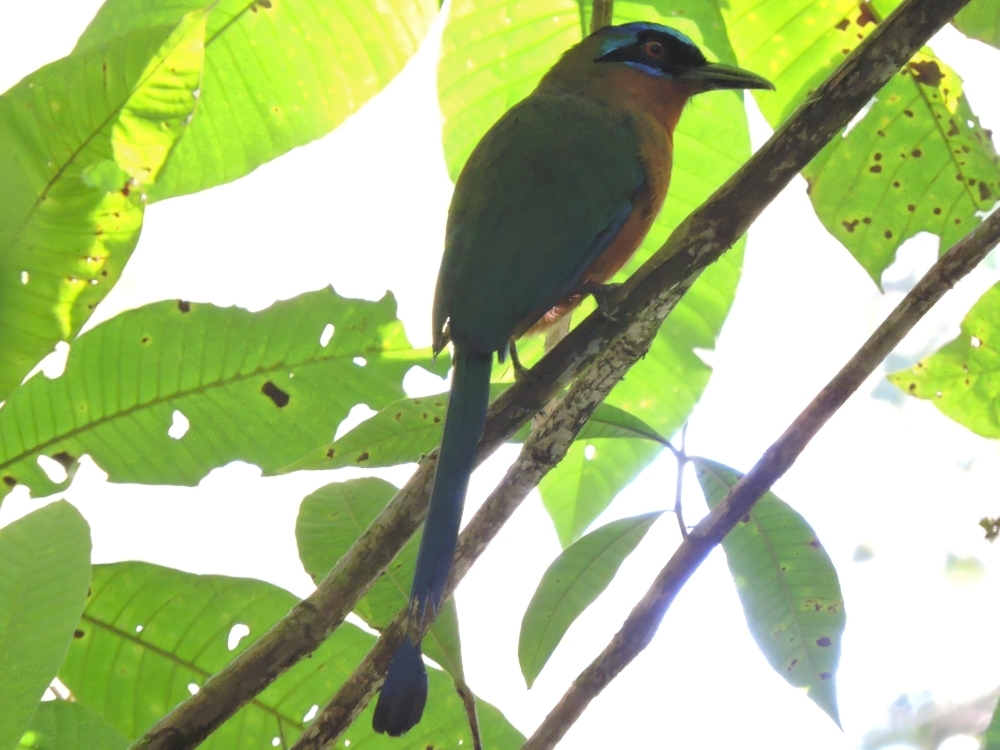
Within the hummingbird haul, my favorite images were Copper-Rumped Hummingbird…
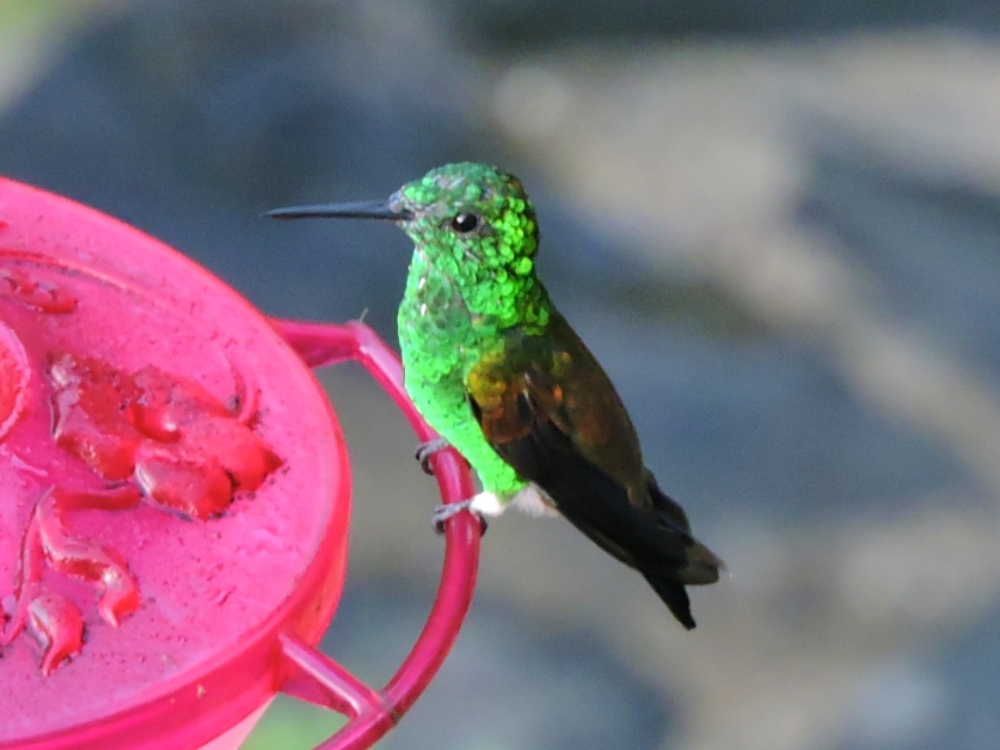
… and the amazing Ruby-Topaz Hummingbird seen later on, just south of the Center.
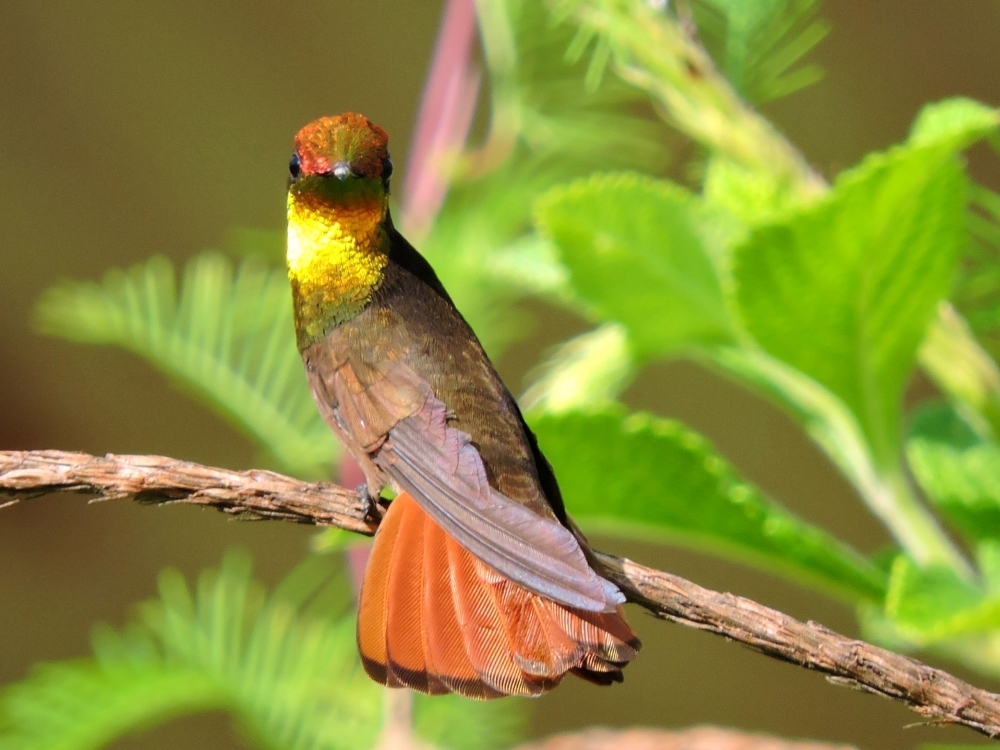
Overall, the nicest bird that I saw at the center was probably the diminutive White-Bearded Manakin.
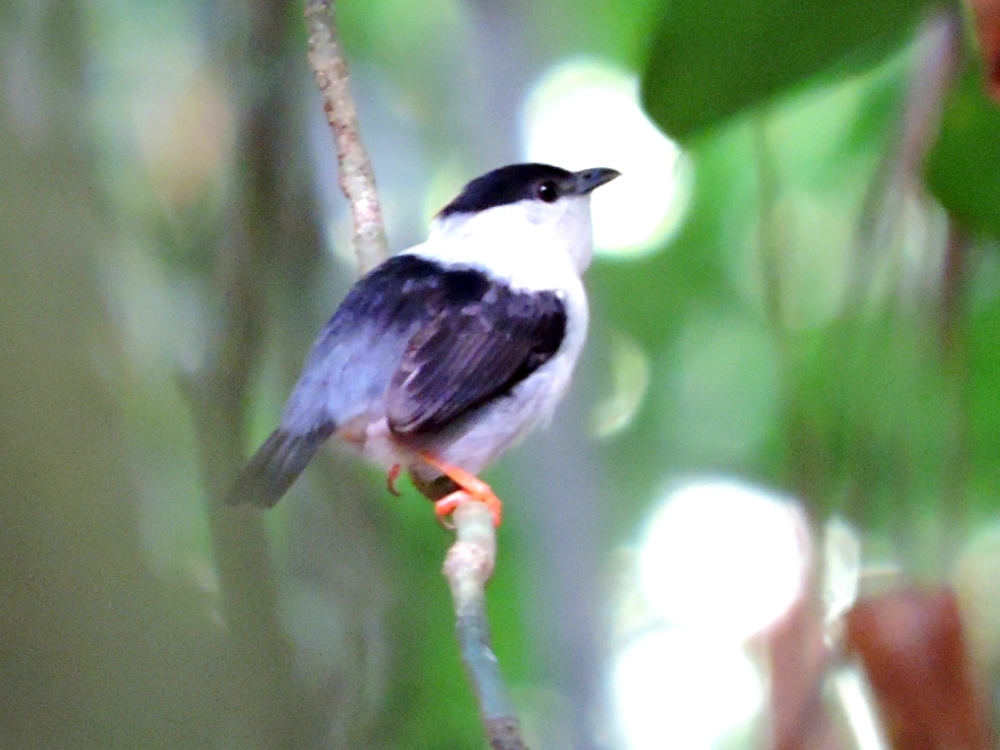
After leaving Asa Wright, I had an extra day, due to the flight schedule mix-up caused by the airline non-delivery of the bike earlier on. I decided to ride to the north coast town of Grande Riviere, the best place to see the critically endangered Trinidad Piping Guan. The short story is that this became another epic dip, as, while taking shelter under a tree from an early-morning cloudburst, I failed to see the bird that was sitting in another tree just twenty meters away, and which had forever disappeared by the time the rain had stopped.
Other new birds that I saw, more or less well, in Trinidad were: Long-Billed Starthroat, White-Chested Emerald, Blue-Chinned Sapphire, Tufted Coquette, Rufous-Breasted Hermit, Little Hermit, Ruddy Quail-Dove, Gray-Fronted Dove, Common Black Hawk, Channel-Billed Toucan, Tropical Screech-Owl, Fork-Tailed Palm-Swift, Gray-Rumped Swift, Barred Antshrike, Black-Crested Antshrike, Turquoise Tanager, Trilling Gnatwren, Euler's Flycatcher, and Piratic Flycatcher.
There was one more, however, that was a major goal, one that was long time in coming for me. During the Tour of Gondwana, fourteen years earlier, I saw an outdoor photo exhibit by Yann-Arthus Bertrand in Singapore. One of the images, of a flock of beautiful birds, struck me particularly hard, and I considered extending my route for that Tour to northern South America just to see those birds in real life. That couldn’t be worked out, however, and another visit to that area earlier this year also failed to locate the birds. Therefore, it was a given that I would stop at the one place that is known to be a guaranteed place to see them, and also happened to be nearby, in Trinidad, namely the Caroni Swamp. There, in the late afternoon, flocks of Scarlet Ibis begin arriving to roost for the night at a certain small island.
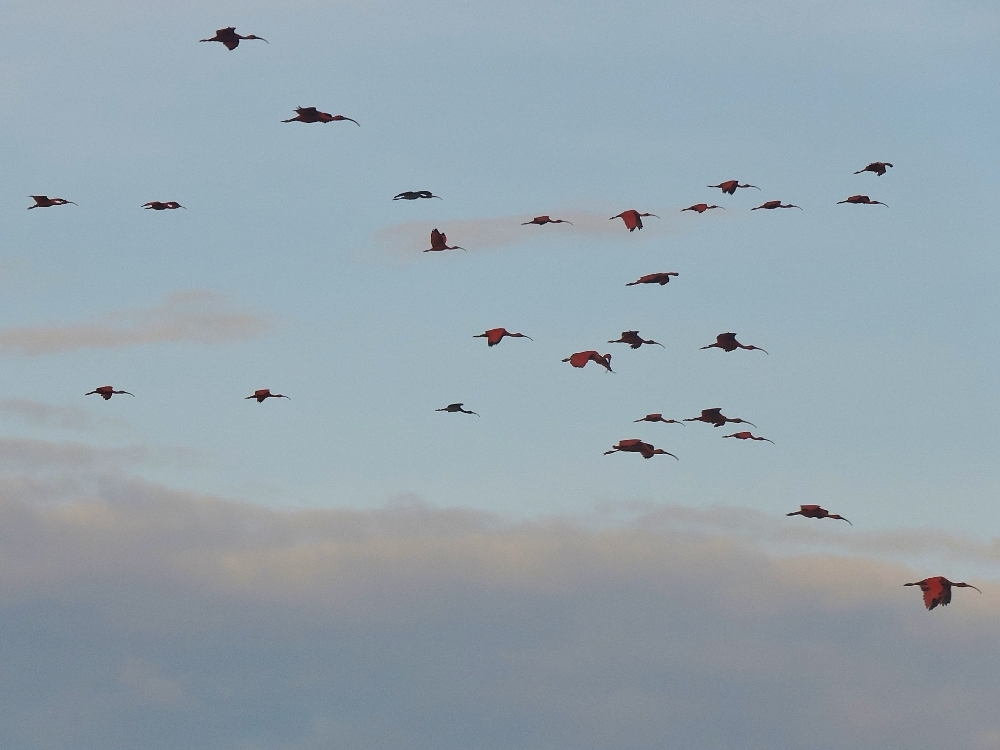
Soon, the trees become crowded with the brilliantly-colored birds.
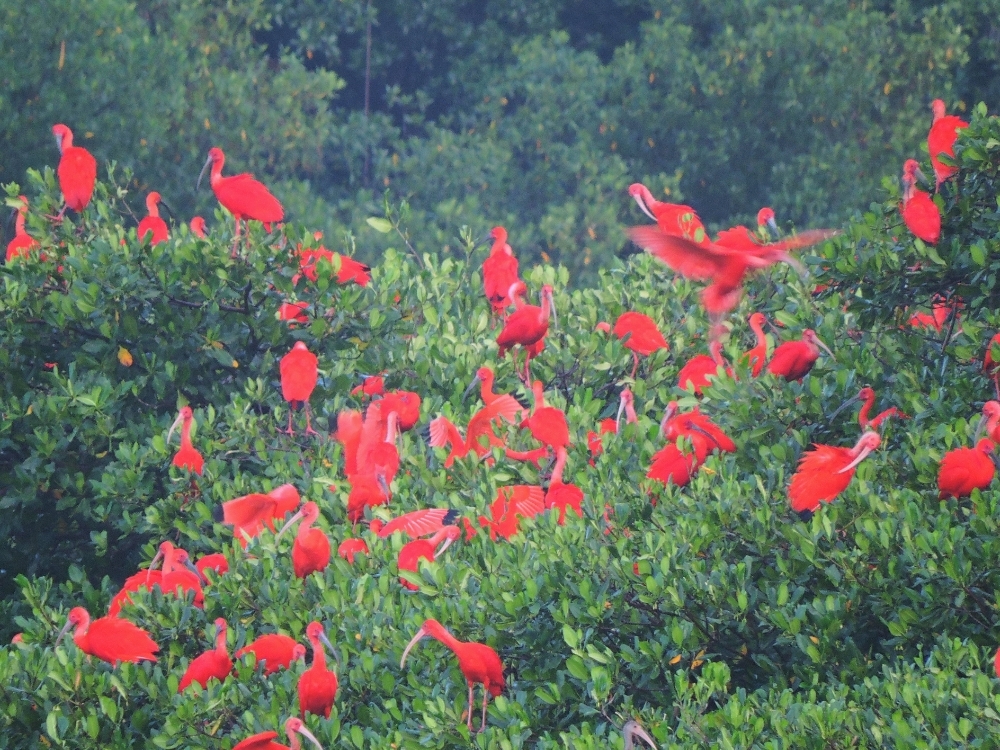
Eventuality, the island looked like this.
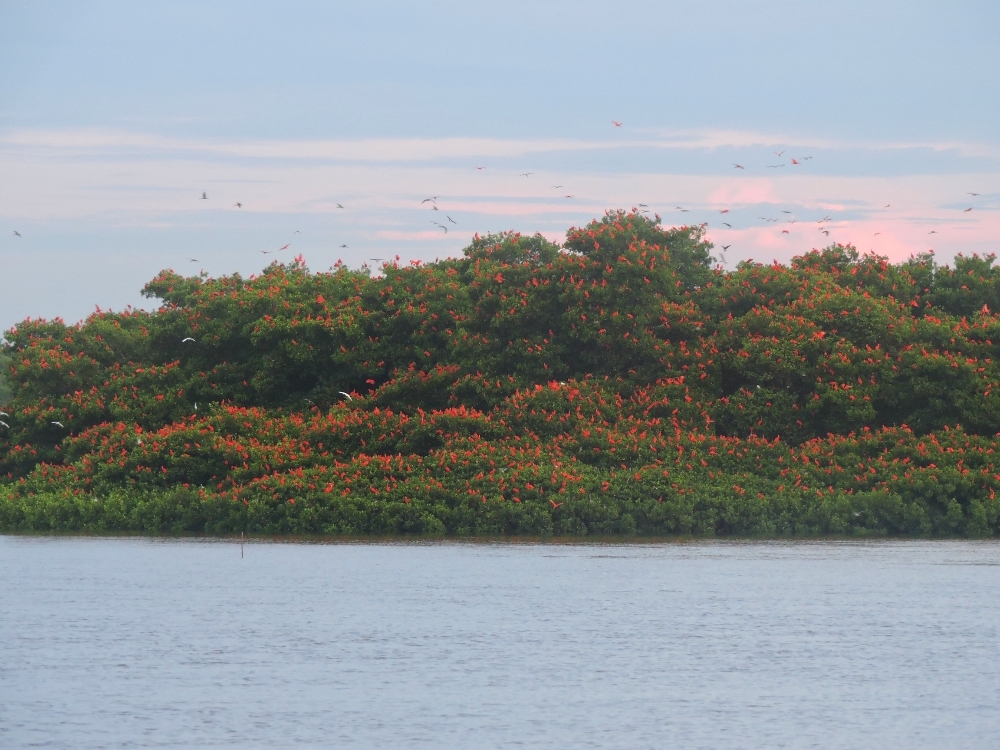
That was a spectacular way to end a section of the Tour that, regarding birds, was both successful and frustrating, and would hopefully be a harbinger of more great birds to come in the upcoming weeks!